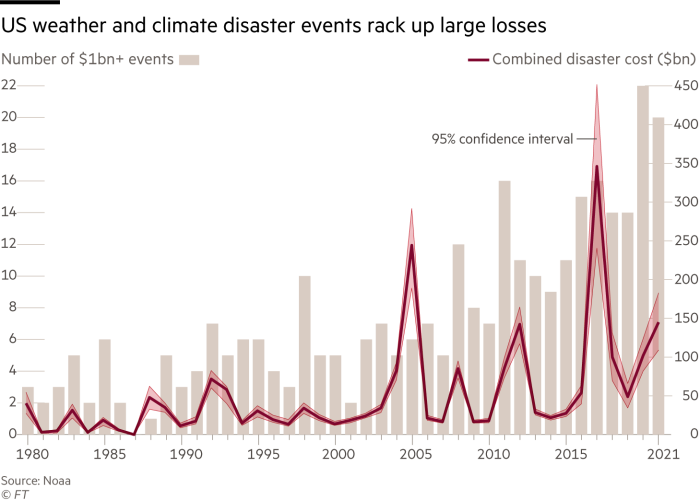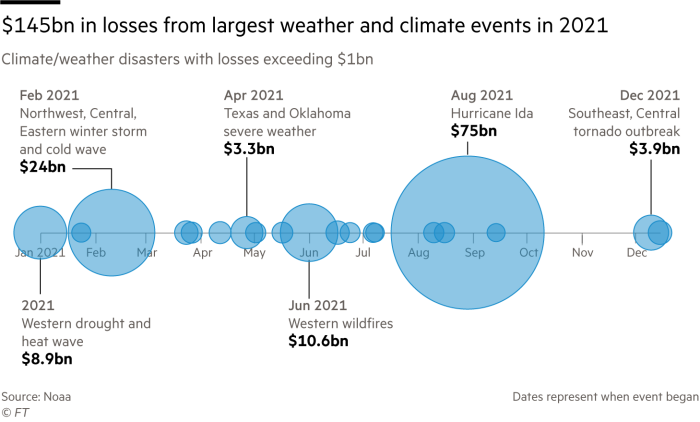
Global temperatures in 2021 were the sixth-warmest on record while the US experienced its fourth-warmest year and suffered 20 severe natural disasters that inflicted damage costing more than $145bn, according to the US National Oceanic and Atmospheric Administration (NOAA).
Even though 2021 temperatures were slightly cooler than the previous two years, the western US was still devastated by a number of wildfires that caused damage costing more than $10bn.

Other severe weather events included the Texas winter storm in February, inflicting $24bn in damages, and Hurricane Ida in late August, that caused destruction costing $75bn.
“Unfortunately, we expect to see more of these extremes in a warmer world,” said Russell Vose, head of climate monitoring for NOAA. “And some of these events were made much worse by global warming, such as the heatwave in the Pacific Northwest.”

For other events, such as the deep freeze in Texas, the role of climate was less clear, Vose added.
The last seven years were the warmest on record, reflecting the impact of global warming caused by increasing greenhouse gas emissions.
In 2022, global temperatures were highly likely to be among the top 10 warmest ever recorded, said Vose. “All of this is driven by increases in heat-trapping gases like carbon dioxide.”
Two factors contributed to make 2021 slightly cooler than the previous two years: the La Niña weather pattern across the Pacific as well as the resumption of economic activity that causes aerosols in the atmosphere.
Aerosols, which are small particles suspended in the atmosphere, can have a cooling effect as they reflect back some sunlight.
“In 2020, we estimated that lockdowns had increased the temperature of the planet slightly, due to the clearing out of nitrates and other aerosols,” said Gavin Schmidt, director of Nasa’s Goddard Institute for Space Studies. “So 2021 would have been a relatively cool year, even without La Niña.”
A similar study from Nasa, also released this week, found that 2021 was tied with 2018 for sixth-warmest year globally, due to a different baseline and methodology.
The temperature analysis from Nasa and NOAA closely tracked similar analysis from other institutions, including Europe’s Copernicus group, which calculated that 2021 was the fifth-warmest on record.
Climate Capital

Where climate change meets business, markets and politics. Explore the FT’s coverage here.
Are you curious about the FT’s environmental sustainability commitments? Find out more about our science-based targets here
For all the latest Business News Click Here
For the latest news and updates, follow us on Google News.
